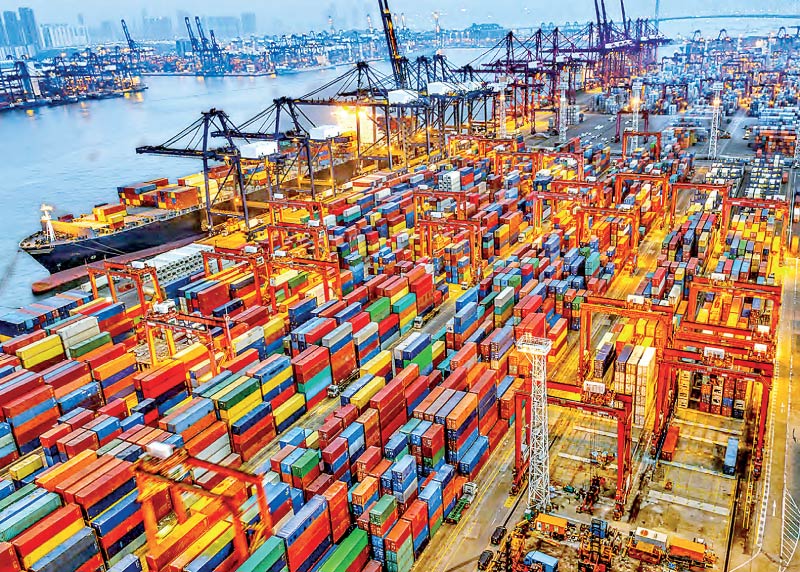Sunday Apr 20, 2025
Sunday Apr 20, 2025
Friday, 16 August 2024 13:00 - - {{hitsCtrl.values.hits}}

Imagine stopping by your favorite grocery store only to find barren shelves and shockingly high prices. This scenario is not as unlikely as you might think. Global supply chains, largely unseen by ordinary consumers, work 24/7 across the globe to ensure that products are available at reasonable prices.
These supply chains are more fragile than they might appear. Recent events have shown just how vulnerable international trade is to disruptions. The COVID-19 pandemic severely disrupted maritime operations, causing delays and congestion that rippled through global supply chains. Russia’s invasion of Ukraine has significantly impacted the global food supply, driving up food prices, reducing grain exports, and exacerbating food insecurity, particularly in sub-Saharan Africa, where transport costs can account for up to 50% of food prices. More recently, attacks on shipping in the Gulf of Aden have disrupted critical maritime trade routes, resulting in increased shipping costs and delays.
The potential impact goes far beyond your kitchen pantry. Supply chain disruptions can affect anything—electronics, automobiles, medical supplies, factory equipment, consumer goods, and more—and without warning. The resulting inventory shortages, operational inefficiencies, production delays, and increased costs can wreak havoc on economies, especially in developing countries.
Container ports to the rescue
Nobody knows what threats will appear in the future. But we do know that container ports—the indispensable hubs of global commerce—can play a role in protecting global trade from unforeseen disruptions.
Container ports are the lifelines of global trade, particularly for developing countries. Over 80% of international trade is transported via sea routes, with a substantial portion carried in containers. Efficient container ports reduce the cost and time associated with importing and exporting goods, making exports more competitive and lowering import prices. High-performing ports attract foreign investment, support local industries, create jobs, and boost income levels, fostering sustainable economic development.
How can container ports protect global trade from unforeseen disruptions? Consider the following:
Building the resilience of ports requires reliable and consistent data. Accurate performance metrics can help governments and other stakeholders identify inefficiencies and target specific areas for improvement. Good data allows for informed decision-making, enabling ports to implement strategic interventions that boost resilience and efficiency. This approach ensures that investments in infrastructure, technology, and processes are directed where they are needed most, which helps protect global trade against unforeseen disruptions.
The Container Port Performance Index
Since 2020, the World Bank and S&P Global Market Intelligence have published the Container Port Performance Index (CPPI) to provide insights into the efficiency of container ports worldwide. By measuring and ranking the performance of over 400 global ports, the CPPI helps stakeholders identify strengths, weaknesses, and opportunities for improvement. The CPPI uses indicators such as operational efficiency, measured by vessel turnaround time and cargo handling speed. It also evaluates infrastructure quality, including sufficient draught, quay, and dock facilities. Connectivity to inland transportation networks, the cost-effectiveness and quality of port services, the adoption of advanced digital technologies, and effective customs and container clearance procedures are also critical factors in the index.
Enhancing resilience through the CPPI
Drive digital transformation: Digitalization is a key driver of port efficiency. The CPPI underscores the importance of leveraging advanced technologies to improve operations. By highlighting ports that have successfully implemented digital solutions, the CPPI encourages other ports to embrace digital transformation. This shift towards digitalization can streamline processes, enhance data accuracy, and reduce operational costs, leading to more efficient and resilient port operations.
Container ports are indispensable for maintaining the stability and efficiency of global supply chains, particularly in developing countries where they drive economic growth. By investing in port infrastructure and efficiency and closely monitoring performance through key indicators—like those provided by the CPPI—countries can harness the full potential of their ports and protect supply chains from future disruptions. This approach will not only build port competitiveness in the global market but also ensure that goods continue to flow smoothly, keeping shelves stocked and prices stable even in times of global uncertainty.